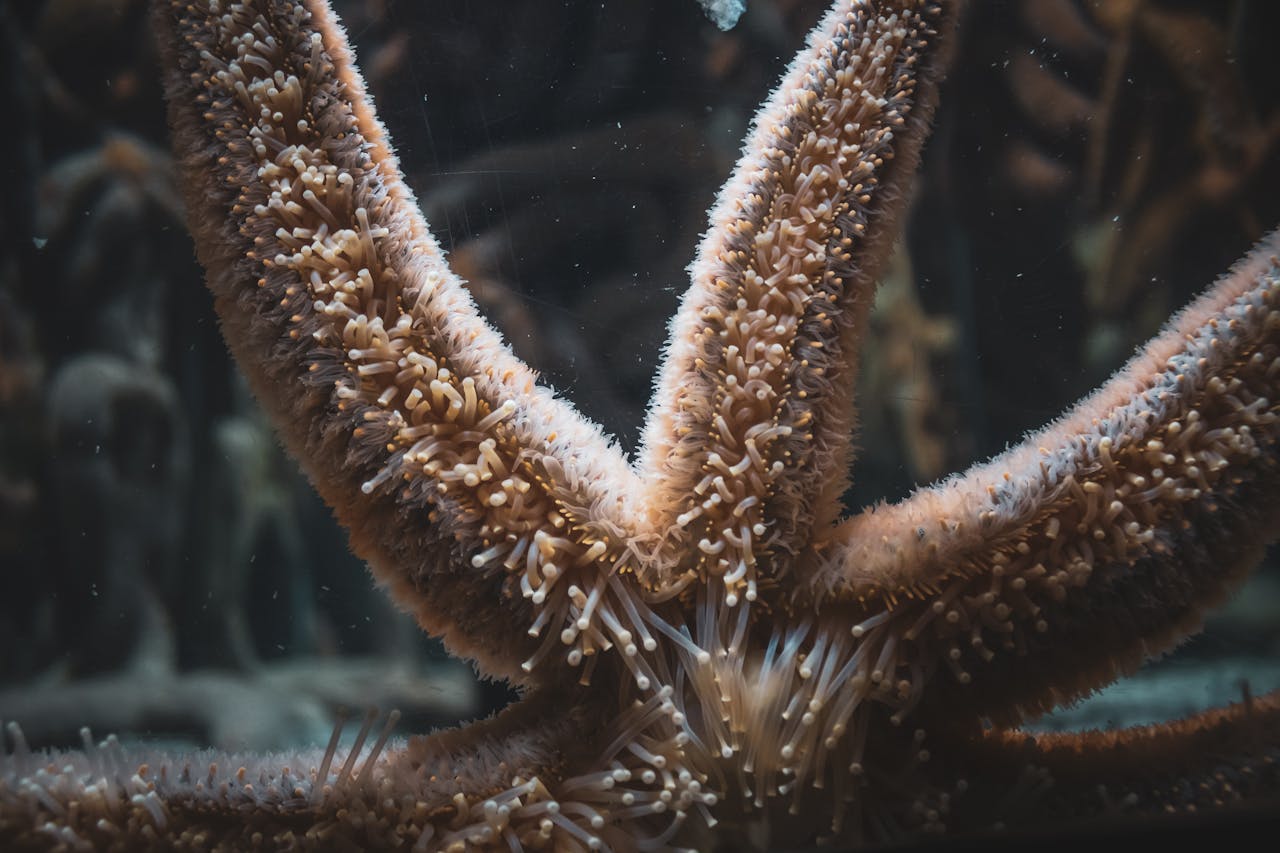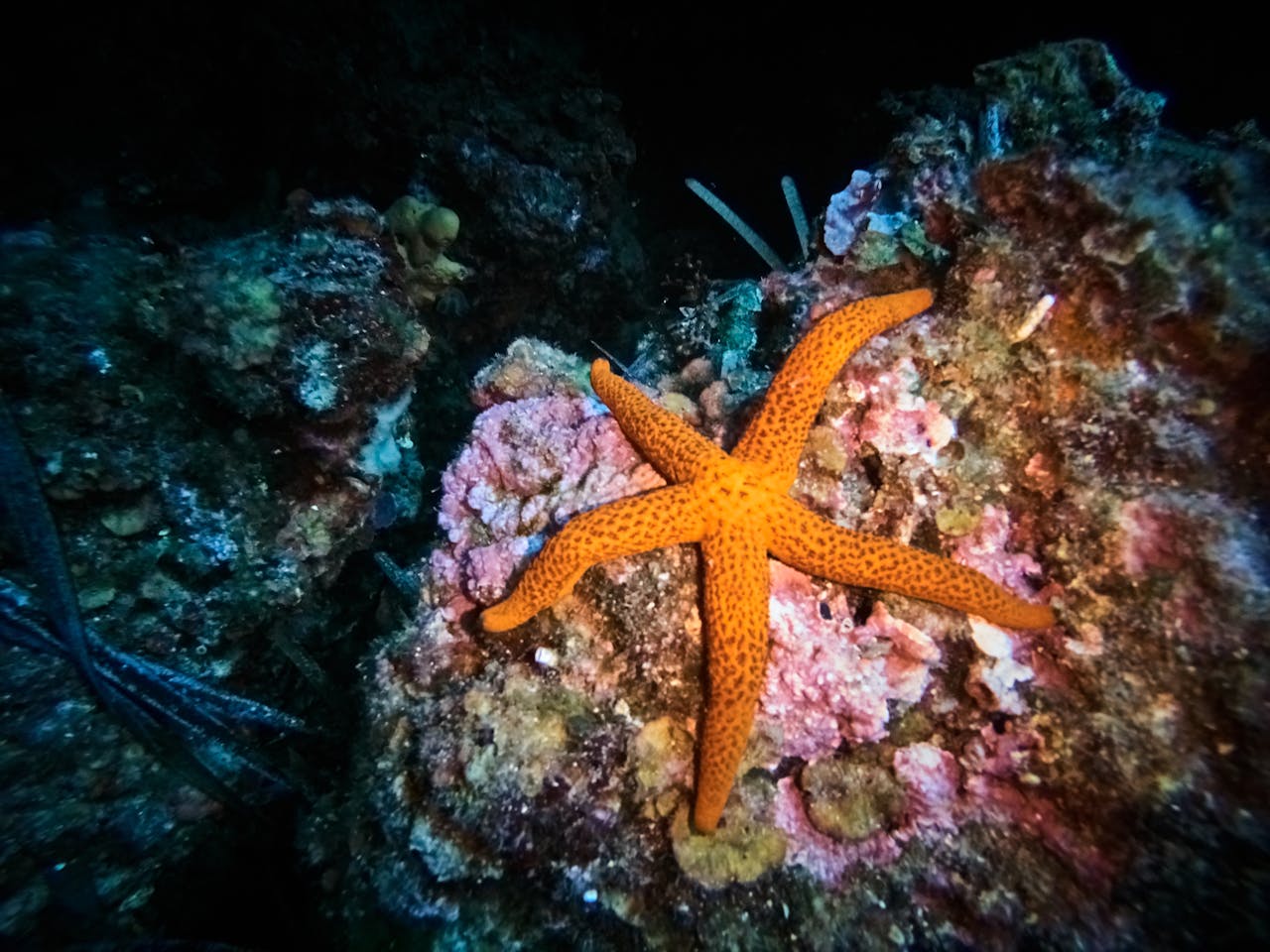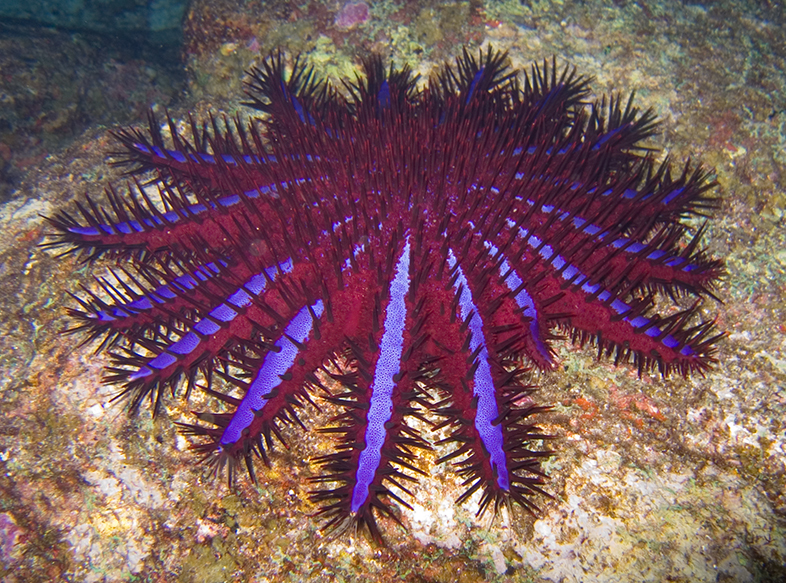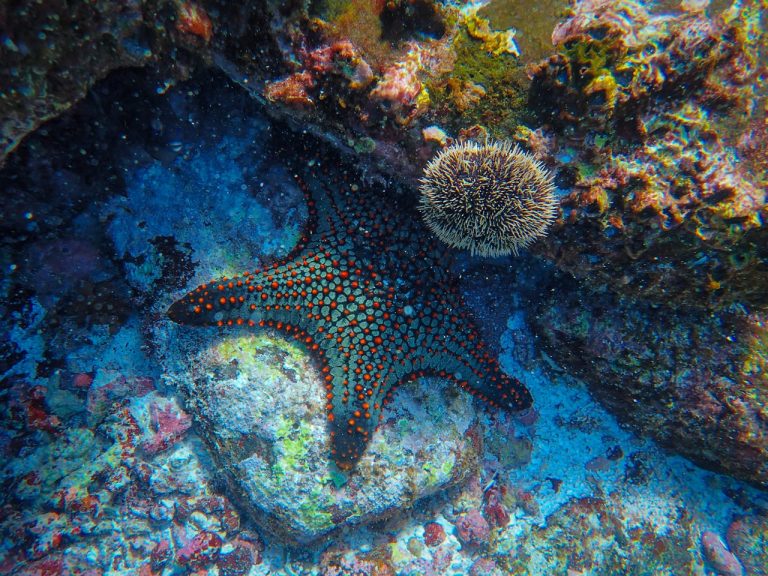For a simple sea creature mostly made up of legs, it’s no secret that starfish get around, but how do they navigate where they are going? The long-held assumption that they relied mainly on olfactory senses was debunked a decade ago, when it was discovered that starfish actually use their tiny eyes.
Yes, most starfish have eyes — and lots of them — but you would never guess, since they are hidden amongst their tube feet on the underside of their arms. Their degree of usefulness was demonstrated through several experiments conducted by neurobiologist Anders Garm.
Starfish eyes
Scientists have known about the existence of starfish eyes for almost two centuries. They are located, one each, at the tip of each arm. Most starfish, (or more correctly, “sea stars,” since they are not fish) have five legs, but some species have as many as 40 arms (and eyes) in total. Each compound eye has many small lenses called ommatidia, which form a pixel of the overall image of what the sea star sees.
For a long time, people assumed that starfish only relied on their sense of smell to determine which direction they crept across the ocean floor. Garm’s research proved otherwise. By removing the tips of each arm (including the eyes) of a number of starfish, and comparing their movement with those who had similar surgery but left the eyes intact, it became clear that many starfish do rely on their limited vision to navigate.
Fortunately, starfish have an incredible capacity for regeneration, so the test animals did not suffer long-term damage.

Success
You are now signed up for our newsletter
Success
Check your email to complete sign up
READ MORE:
- Don’t Neglect Walking Your Dog – It’s More Important Than You Think
- 4 Animals With Superhuman Powers
- The Endangered Dugong: A Marine Mammal Linked with Legend
Quality of starfish vision
Led by Garm, researchers at the University of Copenhagen in Denmark also studied the capacity of starfish eyes. Based mainly on the tropical species Linckia laevigata, research suggests that these sea-creatures are actually color-blind.
“We studied their spectral sensitivity, meaning what colors of light they see, and found that they don’t have color vision,” Anders Garm, the lead author in the study and associate professor in the department of biology at the University of Copenhagen, said. “Since they can’t distinguish between different types of light, they basically see everything in grayscale.”
More importantly, the study also reveals that starfish are unable to see things clearly. Their eyes detect images of only around 200 pixels; a far cry from human eyes which, according to scientist and photographer Roger M. N Clark, is capable of detecting hundreds of millions of pixels. Moreover, they are incapable of seeing fast-moving objects, since they are very slow to form images.
“When it comes to the speed of vision, humans typically see things changing at a rate of about 30 to 40 hertz,” Garm said. “With these starfish, we’re talking about one to two hertz.”

Making do
Starfish don’t normally need to see clearly. Rough images of large objects are enough to help them navigate towards food and away from predators. As long as they stay close to coral reefs they manage just fine.
If they get much further than two meters from the reef, however, they may not find their way back to their primary source of food — which includes mollusks, worms, plankton, other starfish, and coral.
But what about starfish that live in depths so massive, very little to no light can penetrate through?
In 2016, Garm studied 13 different species living in shallow or deep waters, determining that deep-sea stars are just as capable of sight as their shallow-dwelling counterparts. Two of them were also bioluminescent (capable of producing their own light). These glowing starfish may have used bioluminescence to find other starfish, especially during mating seasons.
Striking a balance

Although their mouths are tiny, sea stars are able to consume surprisingly large specimens through their unique capability of external digestion. They press their stomach out from their mouths to digest their prey, which could take several hours.
Most sea stars are beneficial to the ecosystem, as they prey on other creatures that could otherwise overpopulate. The crown-of-thorns (COT) sea star, however, is an invasive threat to the Great Barrier Reef.
Adult COT sea stars average about 12 inches in diameter. They may have as many as 21 arms, covered in long, sharp thorns. Each heavily-armed COT can consume up to 10 square meters of coral per year.
Garm wonders whether the invasive species uses vision to plow its way through the coral reefs.
“It’d be nice to [know] if they use vision to see the reef,” he said, hoping his studies could be useful in protecting areas like the Great Barrier Reef from these destructive stars.







